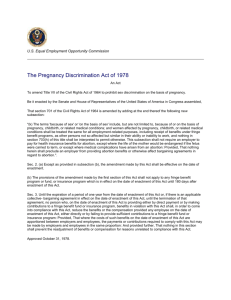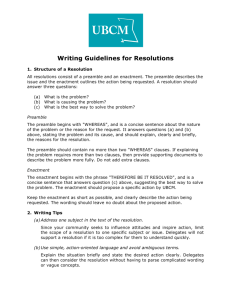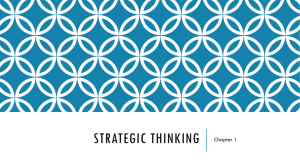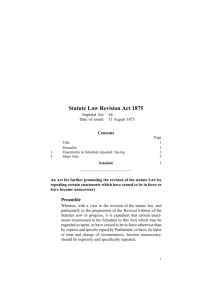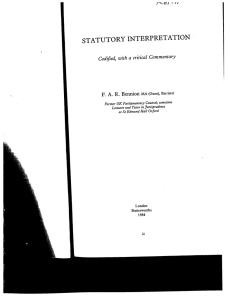GardnerDoctoralConsorttiumProposal.doc: uploaded 19 October 2009 at 7:31 am
advertisement
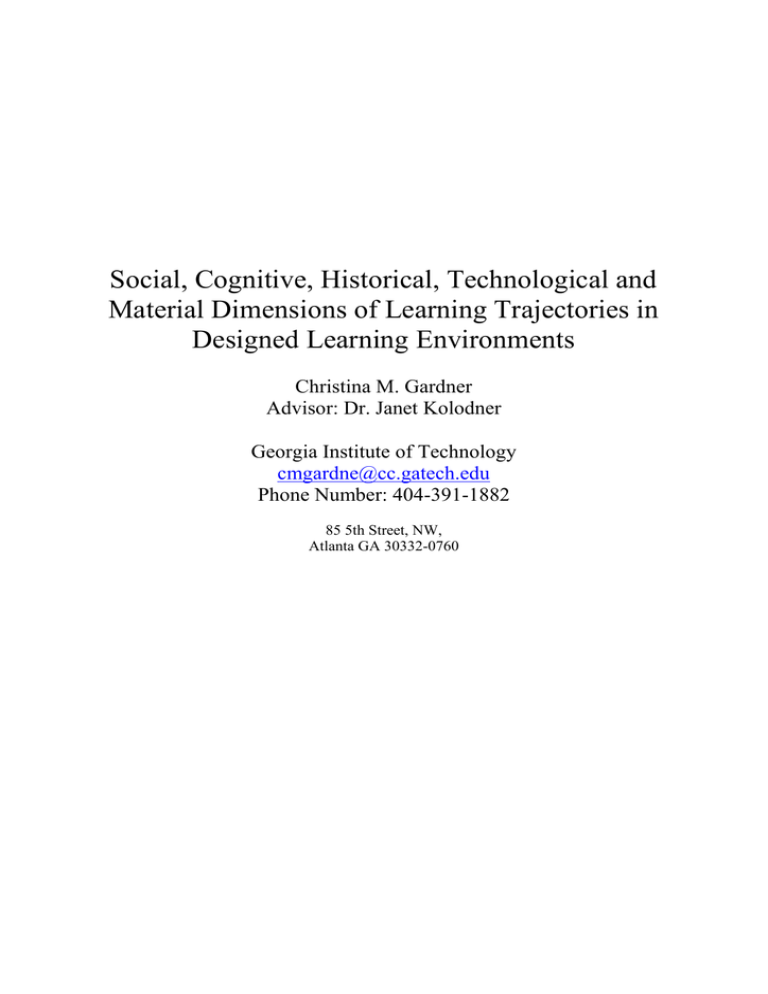
Social, Cognitive, Historical, Technological and Material Dimensions of Learning Trajectories in Designed Learning Environments Christina M. Gardner Advisor: Dr. Janet Kolodner Georgia Institute of Technology cmgardne@cc.gatech.edu Phone Number: 404-391-1882 85 5th Street, NW, Atlanta GA 30332-0760 Social, Cognitive, Historical, Technological, and Material Dimensions of Learning Trajectories in Designed Learning Environments Abstract: The goal of my dissertation research is to track learning (e.g., developing capabilities, understanding, and participation) in an informal after school cooking and science learning environment designed based on constructivist theories of and approaches to learning. I seek to understand what factors contribute to and prohibit learning. I am taking four points of view on learning and knowing to articulate the social, cognitive, historical, technological, and material dimension of learning and knowing. Preliminary results from my analysis highlight three dimensions of the social and material worlds that provide structure in the learning environment and that facilitate the types of experiences and learning that we intended by our design. The three dimensions are the with respect to the (i) relative close proximity and openness of adjacent social and material configurations; (ii) the historically temporal nature of social and material negotiation of an artifact’s history; and (iii) the rise of new social and material configurations as a result of temporally spatially displaced individuals. Dissertation Goals The goal of my dissertation research is to track learning (e.g., developing capabilities, understanding, and participation) in an informal after school cooking and science learning environment designed based on constructivist theories of and approaches to learning. I seek to understand what factors contribute to and prohibit learning. I am doing this by taking four points of view on learning and knowing to articulate the social, cognitive, historical, technological, and material dimension of learning and knowing. Taking these four points of view into consideration simultaneously is allowing me to go beyond those currently articulated about learning. From a Situated point of view (Lave & Wenger, 1991; Wenger, 1998), learning is participation in communities of practices and knowing is a matter of what is important to know for one to achieve one’s goals. From a SocioCognitive point of view (Greeno, 2006; Holland, 1998), learning and knowing are functions of people participating based on how others position them socially through feelings of agency to participate and acceptance from others while participating. From a Socio-historical-material distributed cognitive point of view (Hutchins, 1995), learning and knowing are matters of interactions and manipulation of material/technical artifacts in an environment within particular social and environmental configurations over time. From a Constructivist–Cognitive point of view learning and knowing are matters of interacting with people, materials, and technology to construct knowledge in the head and use knowledge to interact with the world. These four points of view taken together will help us identify social, cognitive, historical, technological and material dimensions of learning trajectories that develop in a designed learning environment. I aim to answer several questions. (i) What do the participants come to know and learn? In what ways are they demonstrating their understanding or misunderstanding? How does their learning change over time? (ii) What interactions, social, material, and technological, lead to learning and knowing? Are their patterns of particular social and material configurations that lead to learning and knowing? Do these configurations change over time? If so, how and why? (iii) What are the practices and rituals learners use to achieve their goals that facilitate or inhibit intended learning? How are these similar or different from those designed into the learning environment’s culture? (iv) In what ways are participants positioning themselves or others through social interactions that facilitates or inhibits learning? I seek to make three contributions. The first is to develop an initial synthesis of these multiple cognitive perspectives to understand the effects and impact of designed learning environments and designed artifacts have on learning. I am paying particular attention to those things that are designed for and those that emerge from the design. The second is to provide more detailed examples and definitions of notions of learning and knowing not explicitly developed but mentioned by Wenger (1998) and Hutchins (1995). The third is to draw out design principles and implications for designing future learning artifacts, technologies, and environments based on a synthesized perspective of cognition. Background The need to synthesize these perspectives is motivated by two factors. The first factor is derived from my work over the past four years on the iterative design and evaluation of the Kitchen Science Investigators (KSI) program. KSI is an informal after school and summer camp program for upper elementary and middle school aged children to learn science and scientific reasoning through the context of cooking and baking. We have designed activities and software to facilitate and scaffold the development of dispositions to reason scientifically (Clegg, 2006; C. M. Gardner, & Kolodner, J. L., 2007; C. M. Gardner, Clegg, T. L. ,Williams, O. L., & Kolodner, J. L., 2006). Over the years, we have improved the activities and software and evaluated them across multiple populations. We have found by enacting essentially the same curriculum with different children, considerable engagement, participation, and learning variations within groups of children and across the four years of enactments. These results suggest that individual differences alone could not account for the considerable variations. The consistent differences have we noticed between each enactment primarily lies in the context in which the program was carried out. These differences included different physical learning environments and with slightly different materials (e.g., ovens directly available to the participants vs. one oven in the next room; working at contiguous tables vs. working in differentiated work spaces). If the constructivist and social constructivist theories of and approaches to learning that we based the design of the KSI learning environment on provided the full story on learning, then we should have seen more consistent results across enactments. This brings us to the second factor, my review of recent research in the Cognitive Science literature revealed multiple perspectives for human cognition and learning. This literature suggests that human cognition isn’t just something that happens inside someone’s head but that it is deeply rooted in the social, cultural, historical, and material aspects of the environments in which humans live. For example, Jean Lave and Etienne Wenger suggest that cognition is a matter of participation in social and cultural practices (Lave, 1988; Lave & Wenger, 1991; Wenger, 1998). Critiques of Lave and Wenger’s situated notions of cognition have suggested that it ignores that anything is happening in the head. However, my reading of Lave and Wenger’s work has revealed their focus was meant to suggest that while a lot is processed in the head, it comes from somewhere and sometimes we come to know in very practical ways. This seems to further suggest that in our everyday lives we are not always accessing formalized procedures to make decisions and especially not those we have learned in school or from a book (Lave, 1988). Others like Hutchins (1995), theorize that human cognition is more than what is going outside or inside the mind and body of individuals. Hutchins’ suggests human cognition is computation that is spread across a socio-technical system that encompasses the human and their environment (1995). From this perspective, there are parts of the computation that are done in one’s head but many others are computed by manipulating artifacts and bringing artifacts into coordination with one another to derive solutions to problems. In this way some of the computation that is assumed to be in an individual’s head is really a matter of functional output of a system that includes the human. Hutchins does not directly consider the human agency that is needed in these socio-technical systems, but he also doesn’t falsely assume it is the human who is doing all the computation in their head. However he recognizes that some of these computations can be internalized, but holds firm to his claim that many of them are facilitated by the artifacts one interacts while making those computations. These perspectives seek to acknowledge that people aren’t just acting on the world, but rather, they are acting with the world. Further, through this participation, cultural and historical norms and peculiarities are embodied in artifacts and people. The conclusion, then, is that cognition is in the interaction, not simply in the people themselves. Lave, Wenger, and Hutchins challenge us to look beyond traditional cognitive notions of knowing to how we know in everyday situations, through our interactions with the artifacts, other people, and the environments we inhabit. These perspectives on cognition leave us to wonder about what social, cognitive, historical, technological, and material dimensions there are to trajectories of learning and knowing and what do they look like. Do these perspectives offer us something more than we’ve had access to with prior perspectives? Do they show us why socio-constructivist approaches work sometimes but not others? Do they show us the nuances of transforming theory into practice? Do they reveal the aspects of artifacts, cultural norms and rituals, and social interactions that impinge upon what makes the theory predictable through highlighting its strengths and limitations? Do they give us insight into the mechanisms by which children are actually learning but we have just assumed are happening because that is what the theory predicts is happening? Furthermore, are those social and material interactions we cite but don’t discuss in depth really a major contributor to an intervention’s success? How can we tell to what degree theses aspects are or are not noteworthy contributors? Therefore, I adopt a broader perspective and approach on human cognition that synthesizes these four perspectives, situated, socio-cognitive, distributed, and cognitive, to analyze our data and understand why the results of our enactments were so different from each other. In particular, we seek to find out what it was/is about each enactment that helped or hindered learning. Methodology Context of Research My data collection is in the context of an after school cooking and science program, Kitchen Science Investigators (KSI). The KSI Research project is being run as a design study, therefore, we have collected data over several enactments in which aspects of the learning environment and resources have been changed to improve the learning. According to the theories KSI has been designed around, these changes should result in better learning gains but at times this has not been the case. Thus, I have selected three studies of this learning environment that are appropriate for exploring the development of learning in a designed learning environment through the lens of these perspectives. In order to compare as similar learning environments as possible, I am combining two of the three studies, Spring 2005 and Spring 2006. These two studies were conducted at the same location and had many of the same participants and combined covering the same content over the same amount of time as the third study, Fall 2007/Spring 2008. Both Enactment 1 (Spring 2005 and Spring 2006) and Enactment 2 (Fall 2007/Spring 2008) took place over 20 consecutive weekly 1 ½ hour sessions (with the exception of school holidays) and used activity sequences we designed. Activity facilitation was provided by two student researchers, Tamara Clegg and I, during both enactments. Thus, both enactments are equivalent in their participation time, learning content, and facilitators. The differences between the two enactments, the population, geographic location, location of the learning environment within the school building, spatial arrangement of the learning environment, software, and resources, are the focus of inquiry. Enactment 1 The participants in Enactment 1a (Spring 2005) were fifth graders in an elite suburban private GK-12 school. There were 16 total participants in the study, 8 girls and 8 boys. The racial composition of our participants reflected the schools population. All participants were white and with the exception of two black participants one female and one male. The participants voluntarily selected to participate in the program as an after school science club and were recruited by brochures promoting the program by their science teacher. The participants in Enactment 1b (Spring 2006) were 17 sixth graders 75% of whom were in Enactment 1a. In this enactment we lost three girls to other extra curricular activities and they were replaced by 4 boys. Most of the participants were spread across the school’s two grade-level science classes instructed by the same teacher. There are two additional adults in the learning environment on a weekly basis besides the two facilitators. The participants’ fifth grade science teacher served as the school’s program sponsor during both studies and was present during each session but serves mostly in auxiliary and supervisory roles. During the enactments, she was well loved and adored by the children. One additional adult was present in the learning environment, a masters student who primarily served as an ethnographer but at times served in auxiliary roles. Over the course of the enactment, we had two different female masters students worked on the project during different semesters. There were very few group-dedicated resources in the learning environment aside from cooking equipment used for preparing recipes. All other resources were located on a common “resource table.” Participants used paper and pencil based artifacts for their recipes, observations, and stories for the first 7 weeks. During the remaining 13 weeks, participants used the software we designed to keep track of their observations and for their recipes while they cooked. The software was also used during big group discussions to read advice column questions (ill-structured problems) and record their questions, what they have learned, and rules of thumb. The learning environment was constructed in a highly trafficked atrium of the participants’ school building that also converts into a cafeteria, holding area before and after school, and auditorium. The workspace was constructed out of 8 feet long folding cafeteria tables that we arrange parallel to one another and located near the small industrially equipped cafeteria kitchen. The kitchen has five industrial sized sinks and two large ovens. Enactment 2 Enactment 2 is currently in progress. The participants in Enactment 2 (Fall 2007/Spring 2008) are in sixth and eighth grade in a suburban public middle school (sixth – eighth grade). There are 16-26 regular participants in the program averaging 16 participants per week. All the participants that voluntarily participate in this study are females as KSI was offered as part of a girls’ only technology program offered by the local YWCA. The racial composition of our participants reflected the schools population. The school is 99% African American and all our participants are black. The participants voluntarily selected to participate in the program. The initial 16 participants were recruited by their science teachers to participate in the program. Initial participants were split almost evenly between the two grades. The subsequent 10 participants were recruited by participants in the program. On a weekly basis, the balance of participants is often skewed in favor of one grade or the other. The sixth grade participants were from a variety of science achievement levels with some in regular classes and some in advance classes. The 8th graders were primarily selected from the gifted team with 3 coming from other levels of achievement. There are 3-6 other adults besides, the two facilitators that are present in the learning environment on a weekly basis. One of the school’s sixth grade science teachers, who recruited the sixth grade participants, is the primary school sponsor and is present for parts of the program and does not consistently attend or stay the entire time. The secondary school sponsor, one of the eighth grade science teachers and department chair, recruited the 8th graders but only occasionally comes and asks the students questions. A YWCA staffer works in a similar role as the science teacher from Enactment 1, often serving as an auxiliary to the facilitators in providing resources and supervising the participants. During the fall portion of the enactment, two masters’ students were also present in the learning environment and served in auxiliary roles. One master’s student was present weekly and the other 40% of the time. During the spring portion of the enactment, an additional master’s student participates in an auxiliary role when she occasionally comes to the program. The resources in Enactment 2 are pragmatically superior to those of Enactment 1, each group is equipped with all of their own cooking equipment, workspaces, and sink and oven facilities at their cooking locations. Participants used paper and pencil based artifacts for their recipes, observations, and stories for the first 6 weeks. After which participants used the software we designed to keep track of their observations and for their recipes while they cooked. The software is used in much the same way as Enactment 1 during big group discussions to read advice column questions and record their questions, what they have learned, and rules of thumb. However, the software has been modified to support participants in planning experiments across groups and within groups. The software has also been modified base on participants in Enactment 1’s interest in writing stories, giving advice, and writing explanations. The learning environment is designed around the six modular kitchen facilities in the Consumer and Families Studies classroom of the participants’ school. Since the Consumer and Families Studies teacher is the school sponsor for modeling and track and her classroom becomes a highly trafficked area after school. It often servers as an after school meeting place. She, however, does not participate in the program at all. Data Collection I am collecting data from four sources to better understand the differences between these two enactments: (i) video of activities, interactions, and participation in the learning environment, (ii) participantcreated artifacts, both physical and digital, (iii) field notes from implementations, and (iv) designed activity goals and objectives. As a facilitator in the program, I am unable to serve as a non-participant observer, so we set up cameras on each group and a global camera to collect the general flow of activities in the learning environment. Video recordings affords repeated play back of the enactments which allows me to identify anticipated and unanticipated social, technical, and materials interactions in the designed learning environment and connect them to the learning that takes place in that learning environment over time. The participant artifacts allow me to complement video recordings and transcripts with what they were writing on paper or in the software during that time or afterward. Other participant artifacts include pictures of perishable food artifacts they created. These pictures are often helpful for understanding observations of the artifacts they may have made verbally, pictorially, or textually. Field notes of the ethnographers in the first enactment are used to provide additional context of the activities in the learning environment. In both enactments, reflective field notes from the program facilitators, written within 24 hours of participation in the program are also used to provide additional context for the activities and interactions (e.g., information gained through informal conversations with participants, parents and teachers), as well as personal attitudes and biases. Written documents of the goals and objectives of the designed activities and rationales behind changes are also used to understand the evolving design and its implementation. Data Analysis In order to determine the social, cognitive, historical, technological, and material aspects of learning in this designed learning environment, I will compare the learning between Enactment 1 and 2. In the analysis, I will characterize these aspects of the learning environment in each enactment and look at how they contribute to the learning. By characterizing each of these aspects relative to each of the enactments I will be able to see trends within a particular enactment and trends across enactments. I will also be able to see how these aspects vary given the constraints of the learning environment in order to articulate conditions in which these aspects affect learning. Since the analysis is taking a synthesized perspective on cognition, I will be able to tease out alternate perspectives on why the learning trajectories developed in the manor they developed and look for specific evidence that would suggest that a synthesized perspective was more applicable than any of the individual perspectives alone. The analysis will take a inductive approach to determining the trends and themes that develop in the learning environment, but will also take a deductive approach to focusing on particular aspects of learning and knowing in these environments. In the analysis, I will use the affordances of repeated play back provided by the video recording of the enactments, to create thick transcriptions. By thick, I mean that the transcripts will include detailed descriptions of the verbal and gestural communication, social configurations, and technological and material configurations captured on the video. Through the process of transcription and grounded-theory like analysis, I will identify trends in the data that seemed to contribute to or inhibit learning. I will also identify places where we saw learning and assumed because it happened when we thought and attributed it to our design and look at the development of that learning to determine if it was the result of our design or emerged in other ways. Then from the field notes and the process of transcription, I will identify places we anticipated learning would happen and resulted in or didn’t result in that learning and investigate those trajectories. I will also identify instances were learning develop in unexpected ways. During this analysis, I will coordinate physical and digital artifacts to create a richer picture of what happened during the enactment and the learning the resulted or didn’t result. In addition, I will coordinate the video, field notes, and designed activity goals and objectives to determine to what degree, the design was implemented or altered as a result of interactions facilitators had with the learners. The initial outcome of this analysis will be rich case studies. From these rich case studies, I will analyze them from each of the points of view described earlier and compare across these points of view. In addition, I will use the resulting case studies and augmented alternative perspectives to compare across implementation contexts with respect to (i) individual instances of development and lack of development, (ii) case studies of development over time (individuals and groups), (iii) the whole. Current Status Currently, I have completed three-quarters of the data collection and will complete data collection at the end of this spring. I’ve piloted the methodologies outlined above on a portion of the data collected and will continue this analysis throughout this spring in conjunction with final data collection activities. I’m in the process of submitting an initial draft of my proposal to my committee and will have successfully proposed by the time of the workshop. I plan to graduate in May 2009. Preliminary Results or Results of pilot work for the formal dissertation Preliminary results from analysis of the initial 10 weeks of Enactment 1 and Enactment 2, show that this initial data analysis framework is indeed helpful for highlighting the effects of the social and technical environment on science learning and reuse. My analysis highlights three dimensions of the social and material worlds that provide structure in the learning environment and that facilitate the types of experiences and learning that we intended by our design. The three dimensions are the with respect to the (i) relative close proximity and openness of adjacent social and material configurations; (ii) the historically temporal nature of social and material negotiation of an artifact’s history; and (iii) the rise of new social and material configurations as a result of temporally spatial displaced individuals. The first dimension from the analysis of Enactment 1 has shown that from the relatively close proximity of adjacent social and material configurations, six emergent communication and coordination trends have been identified. (i) Changes in behavior of the watching group based on what was overheard/heard in the watched group. (ii) Increased frequency and substance of cross-group conversations. (iii) External distractions that cause loss of communication within a group. (iv) Opportunistic overhearing of science content spoken to an adjacent group that epistemically grounds the experiences participants have in the learning environment. (v) Social and material configurations provide a context for social valuing of the activities and knowing asked of learners in the learning environment. (vi) Conversations within group as a result of opportunistic overhearing that lead to learning. The second dimension that emerged in my analysis of Enactment 1 is that learning is related to the temporal nature of the social and material negotiation of an artifact’s history. For example, in an episode where a group of boys are cleaning up their table and waiting for their next activity, the group discussed the history of the height of the foam produced by yeast, sugar, and warm water in a balloon sealed water bottle from a previous activity. In this episode, the boy points out the current height of the foam and shares his memory of the previous height. This promotes the noticing of other group members. This noticing consists of both verbal and referential pointing to the material artifact by each of the group members and which helped to facilitate a conversation and negotiation that encapsulated the history of the foam height within the referenced artifact. The temporal and historical nature of this episode lies in the fact that the measurements of the foam height were not taken by the boys at exactly the same time nor were they aware that they were taking measurements or that others were taking measurements as well. The measurements lied in the interaction with the artifact overtime as did the tracking of the height history which was facilitated by the persistence of the transparent bottle in the environment as learners were working on other tasks. This trend is consistent with Hutchins’ (1995) suggestion that learning is a consequence of interaction with an environment over time. The third dimension that emerged from my analysis of Enactment 1 is related to the rise of new social and material configurations that emerge as a result of temporally spatially displaced individuals in the learning environment. The analysis identified three types of events that caused temporally spatial displaced individuals to form new socio-material configurations. The first type of event was related to limited resources which caused individuals to leave their working area and venture into other parts of the environment. The second type of event was related to individuals accidentally being in particular places at particular times. The third type of event that caused individuals to be temporally spatially displaced was based on the intentional decisions of the individuals. These results are consistent with Hutchins’ (1995) suggestion that, “learning is adaptive reorganization in a complex system (p. 286).” Current field work in Enactment 2 suggests that lack of many of these dimensions are negatively affecting learning, at least early on. For example, small groups in this enactment work in modular workspaces that are at minimum 7 feet apart and separated by immovable structural aspects of the room which result in closed group interactions and obscured the lines of sight and audio between groups. These social and material configurations results in very low frequency of (i) changes in behavior because of overhearing, (ii) cross-group conversations, (iii) opportunistic overhearing of science content spoken to an adjacent group that epistemically grounds the experiences participants have in the learning environment, (iv) social and material configurations that provide a context for social valuing of the activities and knowing asked of learners in the learning environment, and (v) conversations within group as a result of opportunistic overhearing that lead to the type of learning that we saw in Enactment 1. However, we have experienced fewer external distractions that cause loss of communication within a group because of the relatively far spatial distance between small groups as they work. At the writing of this paper, I have not analyze Enactment 2 on the other two dimensions identified in Enactment 1. From the most recent results, we have seen occasions when many of the dimensions reflected in Enactment 1 were present in Enactment 2 and have resulted in trends similar to the ones described above in Enactment 1. Presentation Focal Issue The workshop presentations will focus on the issue that arises for me as I’m moving between these multiple units of analyses trying to reconciling what they suggest about the underlying, alternate, or complementary cause of learning that is happening and how that impacts my ability to make a convincing case that the learning is indeed a function of the things that the analysis is revealing are affected by the social interactions, roles taken on or not taken on, and interactions with the material environment. I will present samples of my data and analyses from each of the different perspectives. I’m focusing on this issue with the hope that the workshop discussion will be a critique of my methodology. In particular, I am interested in feedback on the components of my analysis that may not be complete enough, theories I am missing and should be taking into account, and ideas about how to pull together the results of each analysis. References Clegg, T., Gardner, C., Williams, O., & Kolodner, J. (2006). Promoting Learning in Informal Learning Environments. In K. H. S. Barab, & D. Hickey (Ed.), Proceedings of the Seventh International Conference of the Learning Sciences (pp. 92-98). Bloomington, IN: Lawrence Erlbaum Associates. Gardner, C. M., & Kolodner, J. L. (2007). Turning on Minds with Computers in the Kitchen: Supporting Group Reflection in the Midst of Engaging in Hands-on Activities, International Conference on Computer Supported Collaborative Learning. New Brunswick, NJ. Gardner, C. M., Clegg, T. L. ,Williams, O. L., & Kolodner, J. L. (2006). Messy Learning Environments: Busy Hands and Less Engaged Minds. . In S. Barab, K. Hay, & D. Hickey (Ed.), Proceedings of the Seventh International Conference of the Learning Sciences (pp. 926-927). Mahwah, NJ: Lawrence Erlbaum Associates. Greeno, J. G. (2006). Authoritative, Accountable Positioning and Connected, General Knowing: Progressive Themes in Understanding Transfer. Journal of the Learning Sciences, 15(4), 537-547. Holland, D., Lachicotte Jr., W., Skinner, D., & Cain, C. (1998). Identity and agency in cultural worlds. Cambridge, MA: Harvard University Press. Hutchins, E. (1995). Cognition in the Wild. Cambridge, MA: The MIT Press. Lave, J. (1988). Cognition in Practice NY: Cambridge University Press. Lave, J., & Wenger, E. (1991). Situated learning: Legitimate peripheral participation. New York, NY: Cambridge University Press. Wenger, E. ( 1998). Communities of Practice. New York, NY: Cambridge University Press. Acknowledgments This research is supported in part by the National Science Foundation and the FACES Fellowship.
